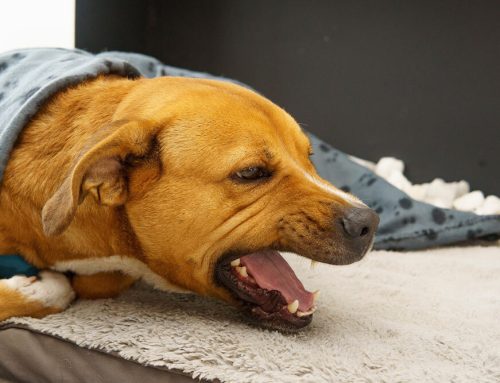On your daily walks with your beloved furry companion, chances are you’ve come across a sign that you hope you’ll never see with your pet’s photo. “Lost Dog” and “Lost Cat” signs posted by grief-stricken families are heartbreaking to see, and all too common. The American Humane Association estimates that approximately one out of three pets will go missing in their lifetime, and 80% of those will never be reunited with their families. Additionally, 90% of lost pets who have no form of identification will not make it home.
A lost pet who is fortunate enough to be found by a Good Samaritan and taken to a local shelter has about a 20% chance of being returned home. However, there is “pawsitive”news—microchipping can increase the chances of being reunited with your lost pet by more than 50 percent. Better news still—dogs with registered microchips are twice as likely to be reunited with their families, while cats are 20 times as likely to be returned home. While our Animal Medical Center of Naples team hopes none of our clients experience the grief of a lost pet, we want to ensure you give your pet the best chance of returning home.
What is a microchip?
A microchip is a biocompatible transponder no bigger than a grain of rice implanted under your pet’s skin, usually near the shoulder blade. The most effective, permanent means of identifying a pet, microchips can be safely injected into any species, including rabbits and pet fish, at any age. Your veterinarian will implant the microchip with a hypodermic needle that is a little larger than a vaccination needle in a procedure that takes only a few seconds. Microchipping causes your pet minimal to no pain, although microchips are often implanted when a pet is already anesthetized for their spay or neuter procedure. Immediately after the chip is inserted, your veterinarian will scan the area to confirm the chip is active, and the identification number unique to your pet can be read clearly. Microchips do not have a battery, so will not need replacement during your pet’s lifetime.
How do microchips in pets work?
Microchips are high radio-frequency identification (RFID) implants that store a unique, permanent identification for your pet that is similar to a human’s social security number. Our veterinarian will add your pet’s chip identification to their medical record, and also provide you with a form to register your pet with the data company, who will store the information in their private database. Registration is often free, or a minimal fee. Be aware that a pet’s microchip is not a tracking device like a GPS, although that is a common misconception.
Keeping your contact information current is the most important step to ensure you and your pet are always connected. Should your microchipped pet go on an unplanned adventure, and is taken to a shelter or veterinary hospital, a universal scanner will reveal their unique identification number, and the veterinary or shelter staff can contact the data company, who will release your phone number, and you will be contacted and reunited with your wayward pet.
In addition, the American Animal Hospital Association has established a universal website, which is like Google for microchips. The unique identification can be typed in their search engine, and if the chip is registered, the company to contact for more information will be identified. Microchip readings will not reveal private information, and do not contain your pet’s medical history, although some company databases allow medical information to be stored for quick reference. This information is not accessible when the chip is scanned.
Tips for using your pet’s microchip

- Check the chip — Schedule a yearly Check the Chip appointment at our Animal Medical Hospital of Naples to ensure your contact information is up-to-date and the microchip is not malfunctioning. The chips rarely stop working, but it’s always good to check.
- Have a backup — Add your pet’s name, microchip identification number, and microchip company number to your phone’s address book, and also back up the information on a cloud or similar system.
- Add a collar — Have your pet wear a collar that contains their microchip number and your contact information. Embroidered collars are better than keeping the information on a tag, but remember that collars can also be lost, which is why microchipping is the best, safest way to ensure your pet can always be identified.
- Flag your account — If your pet goes missing, call the microchip company immediately to flag your account as a missing pet.
- Keep information up-to-date — Moving to a new home? Call the microchip company and our hospital to update your address and phone numbers connected to your pet’s microchip.
Animal Medical Hospital of Naples veterinarians and staff love your pet like family and want them to always be safe. Call our office to schedule your pet to be microchipped, to ensure they have the best chance of returning home should they go missing. Or, if they already have a microchip, make an appointment to check their chip.







Leave A Comment